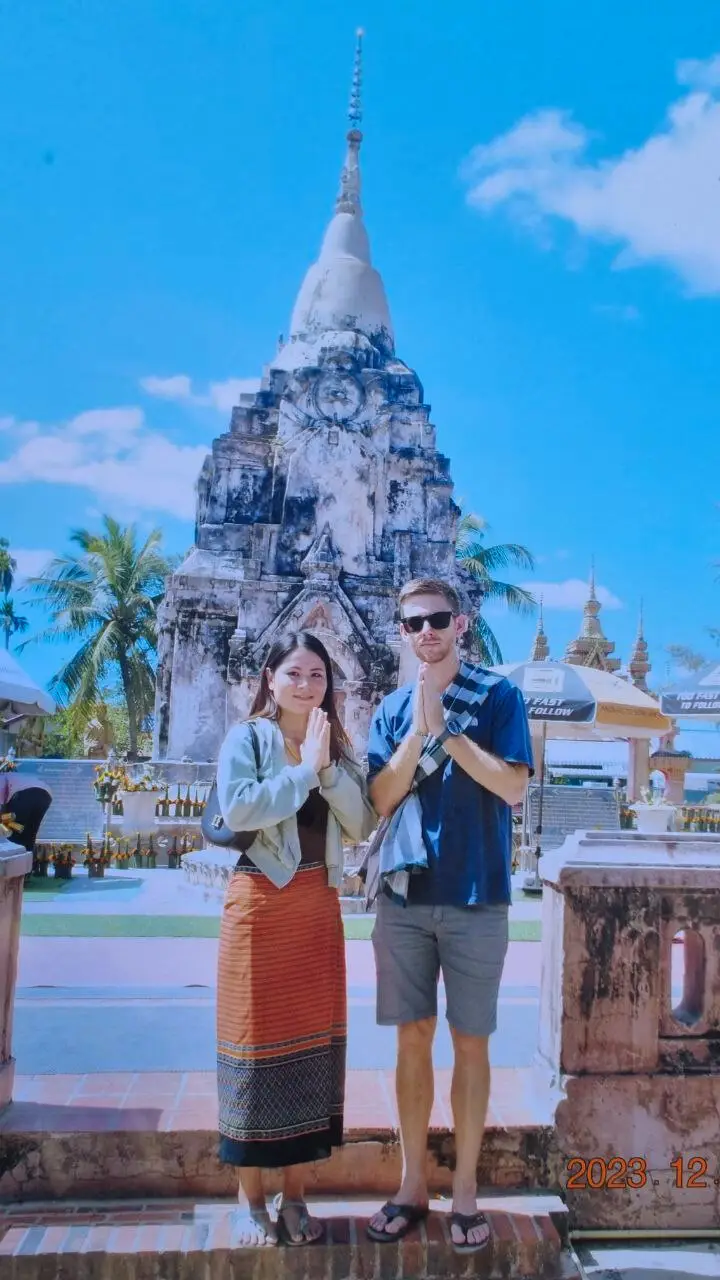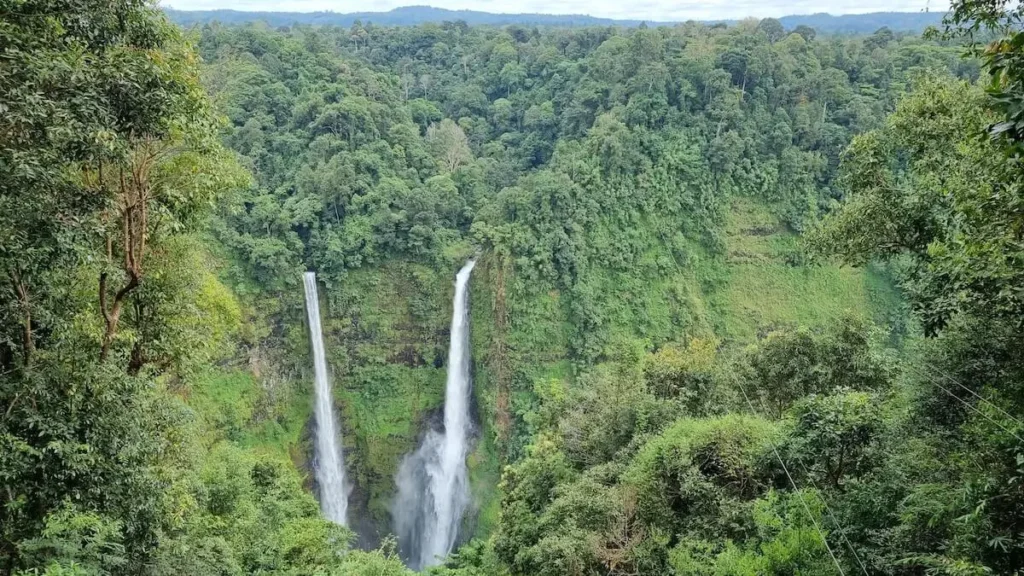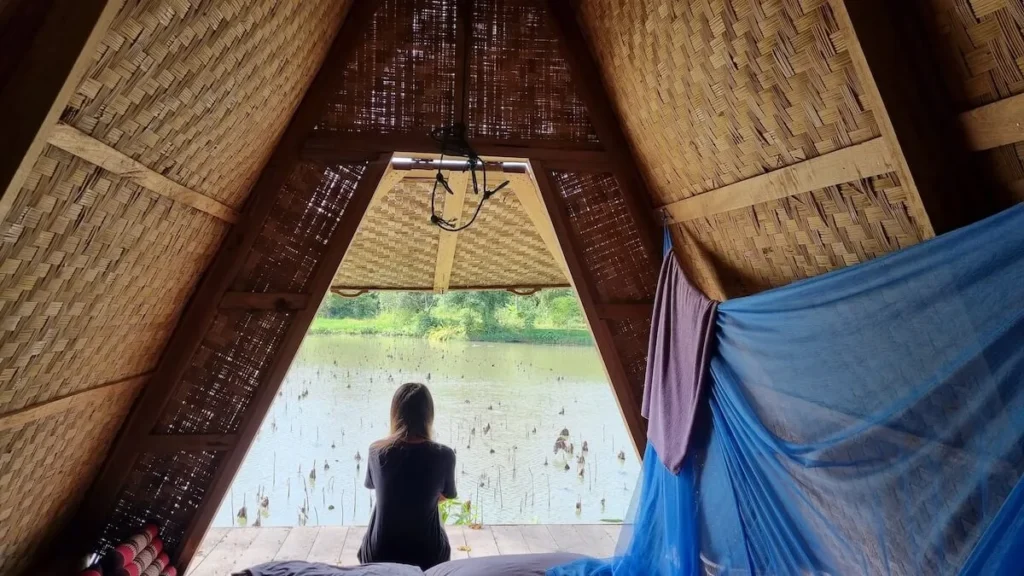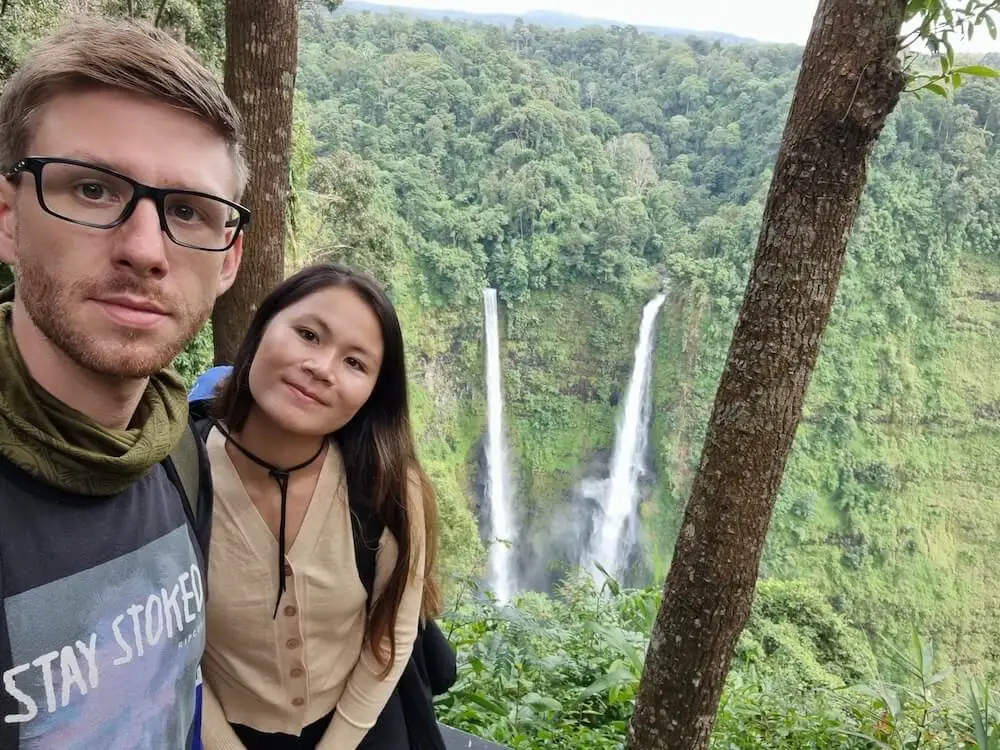
Disclosure: This article contains affiliate links. If you make a purchase through them, we may earn a small commission and you support our blog to write more helpful articles – at no extra cost to you.

The Bolaven Plateau Loop – sometimes referred as the Pakse Loop because of its starting point, is one of the most popular motorbike loops in southeast asia. Laos itself has several different motorbike loops in all Regions of Laos: The Bolaven Plateau Loop in Southern Laos, the Thakek Loop in Central Laos, the Xe Champhone Loop around Savannakhet, Central Laos and the Northeastern Loop up Northeast in the Mountains. But most of the tourists will stick to either the Thakek Loop or the Bolaven Plateau Loop. The other two mentioned loops are not very well known, but also worth to check out if you have more time. If this is your first time traveling to Laos, make sure to make yourself familiar with customs and traditions in the country by reading our Laos Travel Guide. So lets dive into details the famous Pakse or Bolaven Loop.
The Starting point of the loop is the city of Pakse in Southern Laos. Its the biggest city in the south and popular among tourists mostly because of the Loop. Its conveniently located on the edge of the beautiful Bolaven Plateau, which is the most important region of Laos to grow coffee & tropical fruits. Because of the extinct volcano, the soil on the Bolaven Plateau is rich in minerals and very fertile. In addition to that, the perfect climate makes the Plateau a great area to grow all kinds of things.
It is also known for its stunning waterfalls, lush greenery, and cool climate, making it a refreshing escape from the heat of the lowlands. The region is home to several ethnic minority groups, such as the Laven, Alak, and Katu people, who maintain unique traditions and lifestyles. Travelers exploring the Bolaven Plateau can visit picturesque coffee plantations, sample some of the best coffee in Southeast Asia, and enjoy scenic motorbike routes winding through the rolling hills. Along the way, numerous viewpoints and charming villages offer insight into the daily life of the local communities.
To get to the southern City of Pakse is quite easy. There are many different ways to get to the city, depending where you are coming from.
If you want to do the Bolaven Plateau / Pakse Loop yourself riding a motorbike, here are some important things you should know.
First of all, make sure you have experience riding a motorcycle in Southeast Asia. Even though the road conditions on the loop are quite good, Laos is not a country where you should learn how to ride a scooter.
Talking about legally riding a motorbike in Laos, you should have an International Driver’s License (covering motorbikes as well!). There aren’t really Police stops on the loop, but there can be checkpoints around Pakse city. Most of the local Lao people don’t have a license, so Police will usually not care if you have one. But if you don’t have a license, they can fine you or you might have to pay a small bribe. I’m not supporting corruption, but sometimes you can easily get out of an encounter with Lao Police by being friendly & respectful. And if you did something wrong (no helmet, no license, etc.), discreetly hand over a small amount of cash (max. 50,000 – 100,000 LAK). Keep in mind that I’m just sharing my experiences and I’m not supporting driving without proper paperwork. If nothing happens, all good – but in case of an accident, your insurance might not cover the costs.
The road conditions are quite good for Lao standards on the loop, but there can always be some sudden potholes in front of you. Especially during rainy season (June – September), the roads can be wet. Rainy season is when most of the motorbike accidents happen, because people use their front brakes. Don’t do that!

There are plenty of motorbike rentals in Pakse because of the popular loop. As I only have experience with “Miss Noy Motorbike“, I will talk about that specific rental shop. It is run by a belgium guy and his lao wife. They are both super friendly and have plenty of motorbikes to chose from. I would definitely recommend, picking a Semi-automatic Honda Wave 110CC or 125CC (if available) because driving with gears is just so much more comfortable. Those bikes are Semi-automatic, which means that there is no clutch for shifting gears. Give it a test ride before heading out on the loop.
Rental prices starting from 110.000 LAK per day, depending on the bike you pick. Don’t worry leaving your passport as a deposit. The couple who is running the shop is very reliable and they will give it back to you. Travelers going on the loop can also leave their big luggage in with Miss Noy and they will take care until you return from the Loop. Additionally, Miss Noy offers nightly briefings at 6:00 PM for those interested in the Bolaven Plateau Loop, providing valuable information and an opportunity to meet fellow travelers.
The best time to ride the Bolaven Plateau Loop is during the dry season, from October to March, when the weather is cooler, and the roads are in better condition. This period offers clear skies, making it perfect for enjoying the stunning waterfalls, lush coffee plantations, and scenic landscapes without the risk of heavy rains. While April and May can be extremely hot, the higher altitude of the plateau provides some relief from the heat. The rainy season from June to September transforms the region into a lush, green paradise, but muddy roads and occasional flooding can make riding more challenging. Near Paksong on the Loop, the weather can be chilly all year around and it can rain there even out of raining season.

You might have heard about the “Big Loop” and “Small Loop”. For the smaller one I would say 3 days are enough and for the bigger one, plan at least 1-2 days more for completing it. As we only did the smaller one, I will share our 3-Days itinerary.
On Day 1 pick of the Bolaven Loop up your motorbike early in the morning (if you havent done yet on the previous day) and head out of the city of Pakse taking Road Nr. 13. It is a main road, so can be busy, especially in the morning or late afternoon. Dont forget to fill up gasoline! There will be plenty of gas station on the way, hard to miss them. Continue on Road 13 for about 6 km until you reach a big roundabout. At the roundabout take the 2nd exit and keep going on Road 16E. Continue on Road 16 for approx. 20 km and then turn left into Road 20. From there on, the road is not very busy anymore and scenery starts getting better revealing the beauty of the Bolaven Plateau.




After a night near Tad Lo village, continue on Road Nr. 20 towards a village called “Beng”. Once you come to Beng village, turn right towards “Thateng” village. Turning left will bring you off track to Salavan. So make sure to turn right heading southeast. Soon you will come across another popular stop called “Captain Hook“. Unfortunately we didnt stop there when we did the loop, but will for sure next time. Captain Hook is popular for being very passionate of explaining all about coffee and his farm. Its a Katu Tribal village with different beliefs from other ethnic groups in Laos. Make sure to stop there for a tour or even an overnight stop because Captain Hook has a homestay as well.



As we only did the shorter Bolaven Plateau Loop, on day 3 we made our way back to Pakse from an overnight stay in Paksong. Road Nr. 16E will bring you back to Pakse. On the way you will see plenty of fruit sellers, including Durians from the area if you’re into it. Durians from Laos are slightly cheaper than in Thailand, but definitely the same quality. Some families grow their own varieties. For me as a Durian lover, I had to try them. From Paksong it will take a bit over an hour (50 km) to reach Pakse. Once getting closer to the city of Pakse, traffic will get more again. Still not as many cars and motorbikes on the road like in neighbouring Thailand or Vietnam, but still watch out when riding back on your final day to Pakse. If you can not ride a motorbike yourself, but still want to do the Loop, you have to hire a private driver. Expect to pay at least $ 250 – 350 for a 3 days itinerary.
Some more general, helpful tips for the Loop:
Finding the right place to stay along the Bolaven Plateau Loop can really shape your experience. From rustic local guesthouses to cozy bungalows surrounded by waterfalls and coffee farms, the region offers plenty of authentic and affordable options. Here are a few places we personally stayed at and can recommend.
Many travelers coming to Laos, are asking the same question in Facebook groups over and over again. So which Loop is “better”? There is simply no answer to that! Both loops are great with different scenery and different stops.
Both the Thakhek Loop and the Bolaven Plateau Loop offer unforgettable motorbike adventures in Laos, but they each showcase very different scenery and experiences. The Thakhek Loop is known for its dramatic limestone karst landscapes, caves and more remote countryside vibes – perfect if you’re into off-the-beaten-path exploration and raw natural beauty. In contrast, the Bolaven Plateau Loop takes you through lush highlands, cool climates, countless waterfalls and coffee plantations – ideal for those who love greenery, fresh air and learning about local agriculture. Neither one is “better”, it really depends on what kind of scenery and vibe you’re looking for. If you have the time, do both because they complement each other perfectly.
All in all, the Bolaven Plateau Motorbike Loop is one of the best experiences you can have in Southern Laos. It’s the perfect mix of adventure, nature, culture, and coffee – and ideal if you want to explore the heart of this region on two wheels. The combination of cool climate, scenic landscapes, local coffee farms, and countless waterfalls makes every day on the loop exciting and different. Whether you’re learning about tribal traditions, sipping freshly roasted arabica, or jumping into a waterfall to cool off – the loop never gets boring. Take your time, plan a few extra days if possible, and enjoy the freedom of riding through one of the most beautiful areas Laos has to offer. Just ride safe, keep an eye on the road and soak in the unforgettable moments along the way.